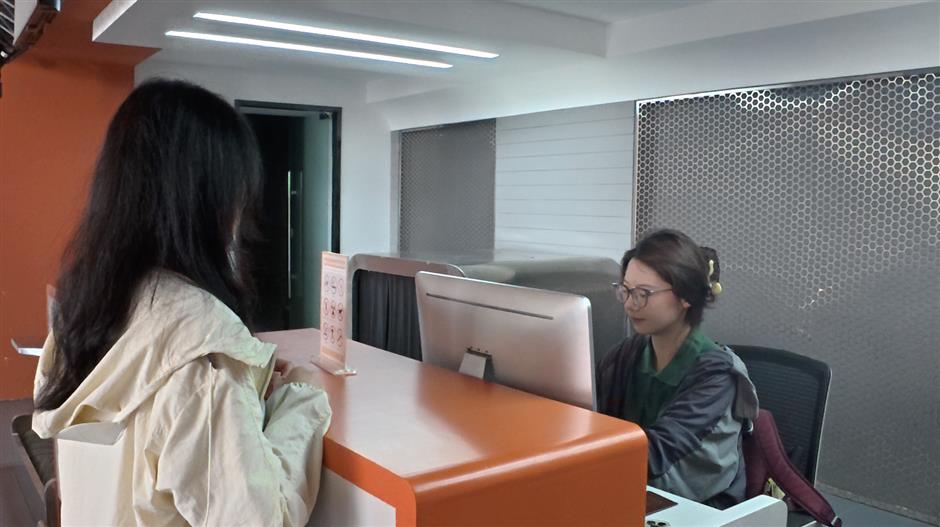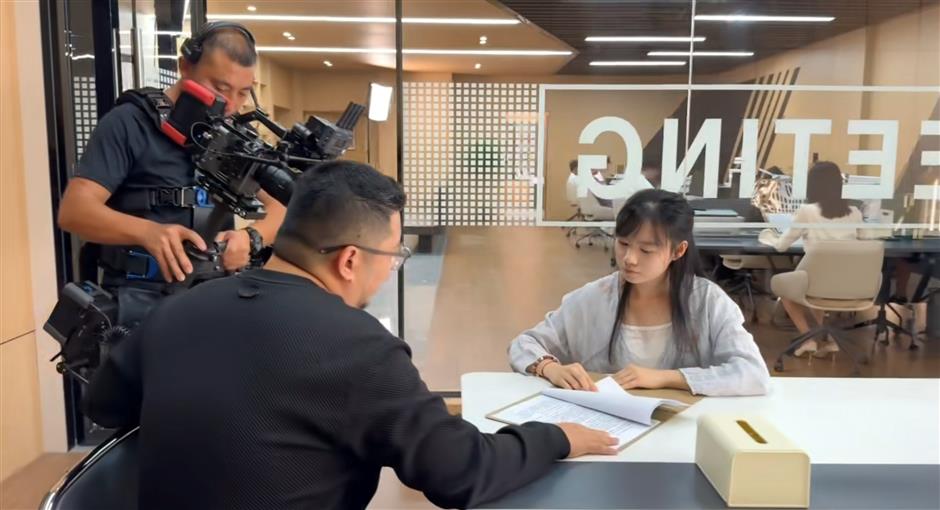Micro-drama base in Hainan taps ASEAN market
Bathed in the lights pouring through the ballroom windows, a man surveys a cluster of socialites with effortless authority, and ennui, until his gaze descends on a young, humbly clad woman, far from the madding crowd.
Such Cinderella-style storylines are turning micro-dramas into cashcows for aspiring producers, as viewers are hooked to their rapid-fire episodes, each lasting a few minutes, packed with romance, tension and suspense that enthralled viewers just crave for more.
Nor is their appeal restricted to Chinese viewers only.
"They have me completely under their spell. I had been watching Chinese short dramas for two months, and I quit because I had to go back to work," Malou Talosig-Bartolome, senior reporter from BusinessMirror in the Philippines, said on the sideline of a seminar for ASEAN (Association of Southeast Asian Nations) media partners at China Media Group Sanya Base on south China's island province of Hainan.
With Chinese micro-dramas becoming popular worldwide, Southeast Asia is emerging as an export hotspot. According to a recent report, short drama app downloads in the region even topped those in North America last year.
Relevant data shows that mobile app downloads in Southeast Asia topped 180 million between July 2024 and June 2025, accounting for 24.96 percent of the global total, as revenue from Chinese short dramas in the overseas market soared from US$6.4 million in July 2023 to US$59.7 million a year later.

Several regional authorities in China are cashing in on the trend, by creating incentives and preferential policies that would give the emerging trade a welcome boost.
One such base is the Overseas Returnees Town in Hainan's Lingshui Li Autonomous County, which faces Vietnam and other Southeast Asian countries across the sea. In the town, Sea Breeze International Movie Studios has turned a number of adjacent buildings into a manufacturing base for short dramas targeting ASEAN countries.
Since it opened in August last year, the studios has handled more than 80 film and television productions, including over 60 vertical short dramas, with five involving Indonesian actors. It provides a one-stop, full-lifecycle solution to micro-drama makers from content creation, photography, to distribution.
There are 90 themed sets in the studios, where production crews, with simple adjustments and embellishments, can toss off the settings for a scene in a Thai hospital, a gaol, or a casino.

To cater to Southeast Asian audiences, some studio sets like police stations are designed in local style.
There is also a scene of a hospital morgue for autopsy, as well as the first-class lounge in an aircraft for the obscenely rich and flamboyant.
Given the tropical flora and fauna of the island, and many exotic Nanyang-style houses in Hainan, the outdoor setting can be easily found.
Its proximity to Southeast Asian countries and the availability of a locale distinct to that region are obviously not its only advantages. More substantial are savings in tax, labor and rentals, as the local Lingshui government has drawn up a number of preferential policies for enterprises moving in here, allowing them to operate rent-free for the first year and at half the rates for the next two years.
In light of policies for the Hainan free trade port, businesses here are also eligible for a reduced corporate income tax rate of 15 percent, 10 percent less than the prevailing rate elsewhere.
Even extras are easy to find.
Just a few kilometers away from the small town, a short distance from the studios complex are a number of gaming and animation companies staffed with technical personnel, and their family. When a production is short of temporary actors, game and animation developers come in handy as extras.
"Sometimes the producer just needs more people to act," said Lei Jun, general manager of Hainan Chenyao Network Technology Co Ltd. "So I bring along my wife, kids, and even my colleagues to play extras. Once I played a role where I had a couple of exchanges with the main character."
Extras without lines are generally paid 110-130 yuan (US$15-18) a day, while those with a few lines can pocket up to 190 yuan, Lei pointed out, smugly, even though his game company generates millions in revenue a year.

A recent circular issued by China's National Radio and Television Administration showed that well-made micro-dramas will be broadcast on television screens in the future.
With these advantages in place, the studios are turning into a springboard for Chinese micro-dramas, sending stories filmed in Lingshui onto the screens of Southeast Asian audiences, where, given the cultural affinity, China-made stories tend to resonate with local people.
"They feature daily lives and conflicts, so they can easily pluck a string with viewers from my country," said Angelica Marvela, a news anchor at Radio of the Republic of Indonesia.
In a sense, this ASEAN exuberance in short drama boom builds on a long history of some Chinese dramas being well received in Southeast Asia.
Dubbed productions such as "Minning Town," "Dream of the Red Chamber" and "Nirvana in Fire" have long enthused ASEAN audiences.
When Zayar Kyaw Winn, a TV producer from Myanmar, was asked if he had watched any Chinese drama, he offhandedly mentioned Bao Qingtian and Zhan Zhao. (Bao Qingtian (999-1062) was an impartial Chinese official known for his integrity and as a champion of justice for the people, with Zhan Zhao being his assistant.)
The producer said that Myanmar people are enamoured with Chinese dramas featuring legendary figures adept in martial arts and honoring a chivalrous code of conduct.
Riding the wave of micro-dramas going overseas, the cooperation between Chinese producers and local institutions is already on the horizon.
While short dramas are making a splash overseas, the deployment of digital technology and artificial intelligence is also leading to a paradigm shift, making drama production more efficient, and less predictable.
Extended reality (XR) can blend real actors with computer-generated environments in LED stages in lieu of physical sets, particularly in view of technical breakthroughs in addressing the problem of moiré patterns, which are the distracting ripples you sometimes see on screens.
While XR focuses on the filming environment, AI would be revolutionary, for it can play a role in the full cycle of short drama production, from scriptwriting, scene design to video generation, according to Ren Lei, a cinematography professor from Hainan Normal University.
Traditionally, editing takes place after filming. With AIGC (AI generated content), editing can be done earlier, as directors, screenwriters and editors plan the storyline and to-be-shot divisions in detail before the actual shooting, deliberating which parts require on-the-spot filming and which can be generated by AI.
"There are still some technical challenges to overcome, but AI has us all waiting for what's next in the future," Ren observed.
(Liu Haowen and Qiang Baoyi also contributed to this story. Liang Xin, Tan Xiang, Liu Haowen and Qiang Baoyi are MA students from the School of Journalism and Communication, Shanghai International Studies University.)


In Case You Missed It...








